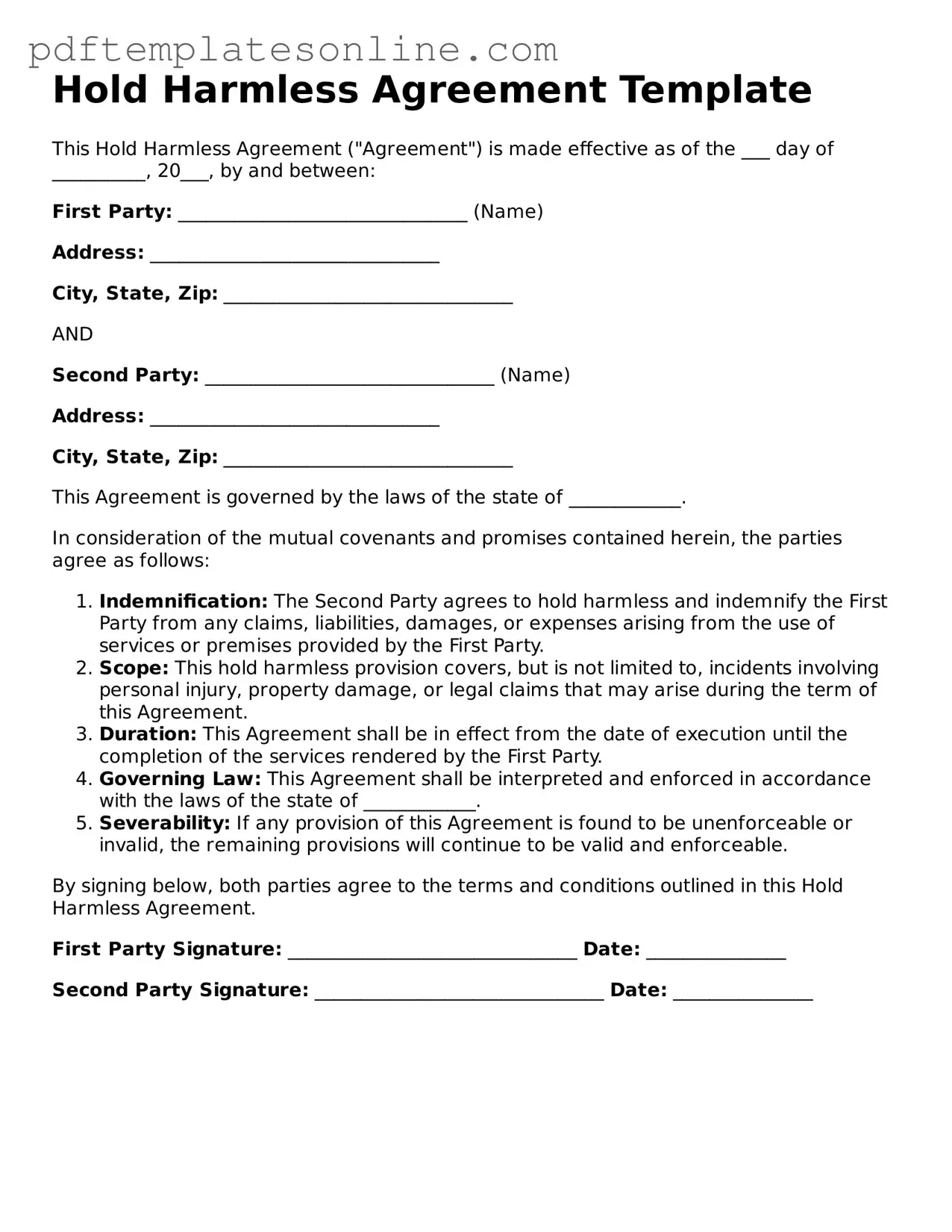Filling out a Hold Harmless Agreement can be straightforward, but many people still make common mistakes. One frequent error is not providing complete information. When details are missing, it can lead to confusion and potential disputes later on. Always double-check that all required fields are filled out accurately.
Another mistake is using vague language. The purpose of the agreement is to clearly outline responsibilities and liabilities. If terms are ambiguous, it may create loopholes. Be specific about what activities or situations the agreement covers.
Some individuals forget to include dates. Dates are crucial for establishing the timeline of the agreement. Without them, it becomes difficult to determine when the agreement is valid. Always include the start and end dates, if applicable.
Signing the agreement without reading it thoroughly is a common pitfall. Many people rush through the process, but this can lead to misunderstandings. Take the time to read the document carefully and ensure you understand all the terms before signing.
Another mistake is not having the agreement reviewed by a professional. While it might seem unnecessary, a legal expert can catch issues that you might overlook. Investing time in a review can save headaches down the road.
People also sometimes fail to keep a copy of the signed agreement. This can lead to disputes if one party claims the agreement was never signed. Always make sure to keep a copy for your records after signing.
Some individuals neglect to include witnesses or notarization when required. Depending on the jurisdiction, having a witness or notary can add an extra layer of protection. Check the local requirements to ensure compliance.
Additionally, not updating the agreement when circumstances change is a mistake. If the nature of the activities or the parties involved changes, the agreement should reflect that. Regularly review and update the agreement as needed.
Finally, failing to communicate with all parties involved can lead to misunderstandings. Everyone should be on the same page regarding the terms of the agreement. Clear communication helps prevent issues and ensures that everyone understands their responsibilities.
